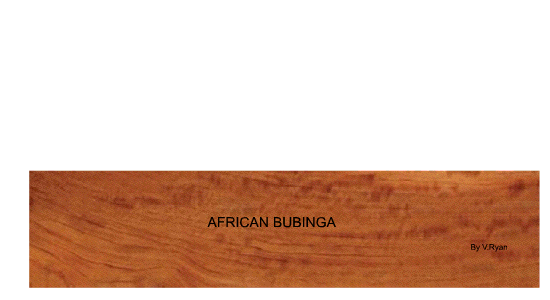| CLICK HERE FOR INDEX PAGE | |
| AFRICAN BUBINGA | |
| V. Ryan © 2008 | |
| A really attractive timber which is often used as a
Rosewood substitute. Guibourtia demeusei Family: Leguminosae Commercial Names: African rosewood, kevasingo (rotary) (UK) Distribution: Chiefly from the Cameroon and Gabon, also Zaire. |
|
 |
|
|
General Description: The wood is medium
red-brown with lighter red to purple veining. The grain is straight or
interlocked. In some logs the grain is very irregular and these are
converted by peeling into rotary cut veneers called kevasingo. The texture
is moderately coarse but even. The weight ranges from 800-960kg/ft3
(50-60lbs/ft3). Average 880kg/m3 (55lb/ft3): specific gravity .88. |
|
| CLICK HERE FOR NATURAL WOODS IN DETAIL | |
| CLICK HERE FOR RESISTANT MATERIALS INDEX PAGE | |